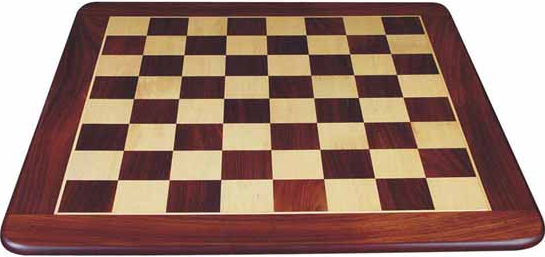You're all set, diagonally!
 If three
1
×
1
squares are randomly chosen from a standard
8
×
8
chessboard, the probability that they all lie on the same diagonal is
b
a
for coprime positive integers, find the value of
a
+
b
.
If three
1
×
1
squares are randomly chosen from a standard
8
×
8
chessboard, the probability that they all lie on the same diagonal is
b
a
for coprime positive integers, find the value of
a
+
b
.
The answer is 751.
This section requires Javascript.
You are seeing this because something didn't load right. We suggest you, (a) try
refreshing the page, (b) enabling javascript if it is disabled on your browser and,
finally, (c)
loading the
non-javascript version of this page
. We're sorry about the hassle.
1 solution
Is it possible to generalize this?
Log in to reply
What kind of? Can u post the generalized question?
Log in to reply
For n × n chessboard.
Log in to reply
@Pi Han Goh – 1,2 length diagonals are cancelled. 3-(n-1) length diagonals are chosen,each of no4.n length are of only 2. Now we can follow Brian's solution.
Log in to reply
@Shyambhu Mukherjee – Can you post the question? Thanks.
Log in to reply
@Pi Han Goh – I have just substituted n n in place of 8 8 in the question. However for m squares to select we can still follow Brian's solution but there we have to put mcm=Mac(m+1) then series will shorten.
For the n × n board,
The total ways to select favorable squares is, 2 × [ ( 3 3 ) + ( 3 4 ) + ( 3 5 ) + . . . . . + ( 3 n − 1 ) + ( 3 n ) + ( 3 n − 1 ) . . . . . . . ( 3 5 ) + ( 3 4 ) + ( 3 3 ) ]
2 × [ ( ( 3 3 ) + ( 3 4 ) + ( 3 5 ) + . . . . . + ( 3 n − 1 ) + ( 3 n ) ) + ( ( 3 3 ) . . . . . . . ( 3 n − 2 ) + ( 3 n − 1 ) ) ] ... ( 1 )
Using the binomial identity,
( r r ) + ( r r + 1 ) + ( r r + 2 ) + . . . . . . . . + ( r m ) = ( r + 1 m + 1 )
( 1 ) , Simplifies to
2 × [ ( 4 n + 1 ) + ( 4 n ) ]
Total ways to select squares would be, ( 3 n 2 )
Hence, probability = ( 3 n 2 ) 2 × [ ( 4 n + 1 ) + ( 4 n ) ]
You could simplify it further if you wish.
Log in to reply
THANKS! Simplified form: n ( n + 1 ) ( n 2 − 2 ) ( n − 2 ) ( n − 1 )
Log in to reply
@Pi Han Goh – Awesome! We could also do it for choosing x squares instead of 3, but that would take a bit longer to simplify.
Log in to reply
@A Former Brilliant Member – True True! ^_^
Log in to reply
@Pi Han Goh – For an n × n chessboard and 2 ≤ r ≤ n squares, we get P = 2 ⋅ r + 1 2 n − r + 1 ⋅ ( r n 2 ) ( r n ) ∼ r + 1 4 n 1 − r
as the probability for all r squares to lie on one diagonal.
In total there are 3 0 diagonals on a chessboard, ( 1 5 ascending from left to right and 1 5 descending from left to right).
Since 8 of these have fewer than 3 squares we need only consider the 3 0 − 8 = 2 2 diagonals that have 3 or more squares. Of these, 4 each have lengths 3 , 4 , 5 , 6 , 7 and 2 have length 8 .
For a diagonal of length n , there are ( 3 n ) combinations of 3 squares that can be chosen from that diagonal. Thus the total number of combinations of 3 squares that lie on the same diagonal of the chessboard is
4 ∗ ( ( 3 3 ) + ( 3 4 ) + ( 3 5 ) + ( 3 6 ) + ( 3 7 ) ) + 2 ∗ ( 3 8 ) = 3 9 2 .
Without restrictions there are ( 3 6 4 ) = 4 1 6 6 4 combinations of 3 squares that can be chosen,
so the desired probability is 4 1 6 6 4 3 9 2 = 7 4 4 7 , and thus a + b = 7 + 7 4 4 = 7 5 1 .